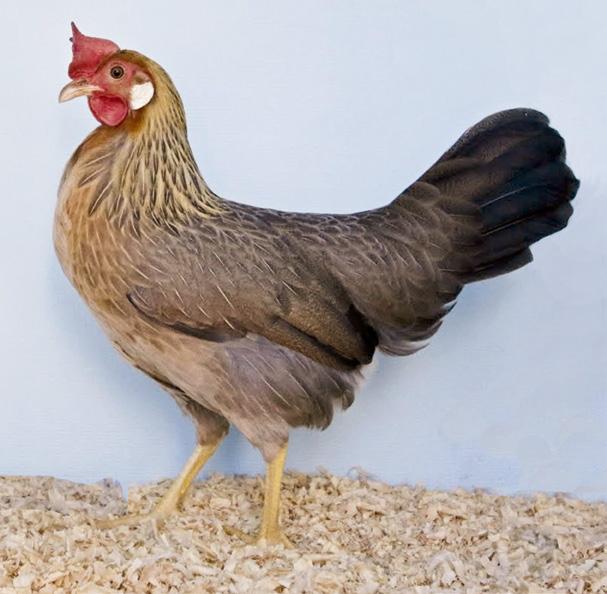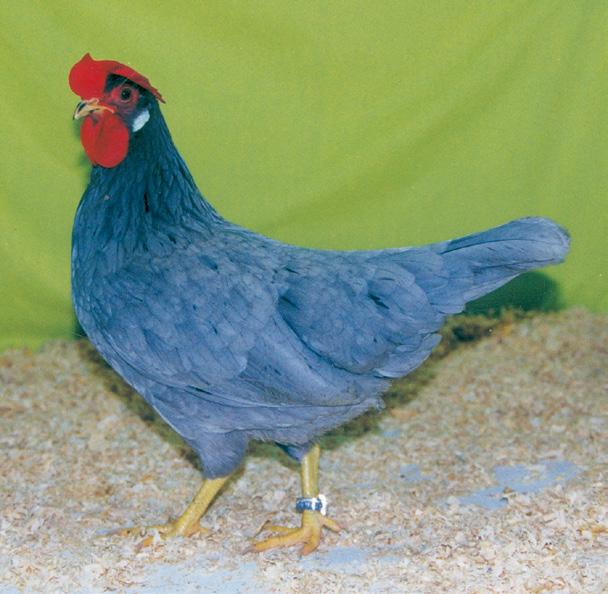
4 minute read
Bantam with Big Eggs
By Megg Miller, Euroa, Vic.
If you’re thinking about getting poultry, now may be the time to act. With the big supermarkets aiming to offer only free-range eggs in the foreseeable future, you can be sure there will be periods over winter when eggs are in short supply. Having a few fowls will be an asset as well as lots of fun.
Advertisement
The rewards are greater if you can source purebred pullets because your support of breeders helps keep the range of sustainable breeds going. While you may not get the terrific first-up egg output that a Hy-Line or ISA can achieve, you can usually count on five years of reasonable egg output. That’s more than double what you may get from the commercial layers.
One breed that should appeal is the Leghorn bantam. Don’t be put off by stories from the past of flighty pullets sailing over every fence and behaving excitably. Such behaviour suggests poorly managed birds that rarely saw a human.
Leghorn bantams are very active, but they’re curious too and will want to know who you are and what you’re doing. They will respond to your presence and voice. They’re also very smart and are capable of soon working out that you’re good for treats. A reward works very well when interacting with and training these bantams.
Egg Size
The Leghorn bantams are renowned for high egg lay and owners often exhibit the eggs in egg plate competitions at shows. There is an upper limit for bantam exhibitions eggs, 42.5g and eggs that are larger don’t usually get a look.
Bantam Leghorn eggs don’t usually do well because they exceed the weight limit. This might not please the exhibitors, but it’s good news for those wanting a decent sized egg. It’s not unusual for the eggs to weight 50g, an impressive weight. Keep in mind that it’s only a few decades ago that a large standard egg was 58–60g, and produced by hens more than double the size of the bantam.
There are other breeds that are good layers, Anconas, Australian Langshans and even some lines of bantam Light Sussex, but egg weight is usually lower.
The Black Leghorn also has an excellent reputation for laying and there are other attractive colour varieties like the Blue, Brown and Buff that are not far behind in productivity.
Heat to L erance
One of the advantages of keeping a breed that originated in the Mediterranean area is its ability to cope with high temperatures. The name Leghorn was the English pronunciation given to local fowls from Livorno on the west side of Italy that were despatched to America in the 1830s. These fowls were named after the port from which they were loaded.
The large comb and wattles the breed carries allow additional heat loss during hot weather and when dipped in water during drinking, provide a cooling effect. It’s not known if the size of the comb and wattles was deliberately selected for or an adaptive response over centuries to hot local conditions.
L ow B roodiness
Another desirable feature with Leghorns is the low incidence of broodiness. It’s rare for one of them to go broody and should it occur it’s likely to be short and half hearted. While this is better for egg production, it means that if you want to breed some youngsters you will need to use an incubator or a clucky hen from another breed.
You will notice from the accompanying photos that Leghorns have lovely large, white, almond-shaped earlobes. The colour is important. Generally white-lobed fowl have a low incidence of broodiness and they’re likely to lay white or creamshelled eggs. Members of this breed lay large well-shaped white eggs.

c ontented c H ooks
Leghorns are happiest if they’re able to get out and scratch and range around. This doesn’t mean they are not suitable for backyards, but thought needs to be put in to creating an environment that engages them and keeps them busy. An outdoor ladder perch is great for jumping up and down, as is a pole with mini perches or platforms attached that they can jump between and watch the world.
Hanging grass, corncobs or whole fruit offer distractions and a box for dust bathing is obligatory. A bucket of weeds or fallen leaves are other cheap and easy boredom busters.
Spacious quarters suit best and birds won’t say no to a reasonably high perch. If adding in other breeds, try and get birds of similar size and even appearance to reduce bullying.
You could expect the bantams to eat around 80–90g daily, a little less if some kitchen waste is recycled with them. Of course if they are going outside and spending the day in cold windy weather, they will eat considerably more.
A good laying ration is important to support the high egg lay. Remember that hens need adequate protein for egg lay and a good carbohydrate intake to meet energy needs. Providing ad lib shell grit makes sense because the demand for calcium for the large eggshell may be greater than available from feed. And don’t forget the greens –not that the hens will let you, they love this supplementary part of the diet and we love the rich orange yolks that result.
Where do you find Leghorn bantams? There is a national club that advertises on the Breeder/Club page and there are state groups in Qld and Vic. As well, Leghorns are popular show birds and so if you can locate a local poultry club, one of the members is likely to breed Leghorn bantams or know someone who does. T t om too oL d?



We’re very fond of our turkey tom Henry and don’t want to get rid of him. However, he is nearly five years old and some visitors recently suggested he might be too old for fertility and offspring. He’s sprightly, he’s not so heavy that he might have trouble mating or likely to do damage to the hens and his legs and feet are in good condition.

He’s had an easy life and been well looked after and successfully fathered nine poults last year.
Can we introduce a young tom as an insurance measure without initiating turkey world war III and would dear old Henry be likely to come off second best? If we decide to use him for another season is










